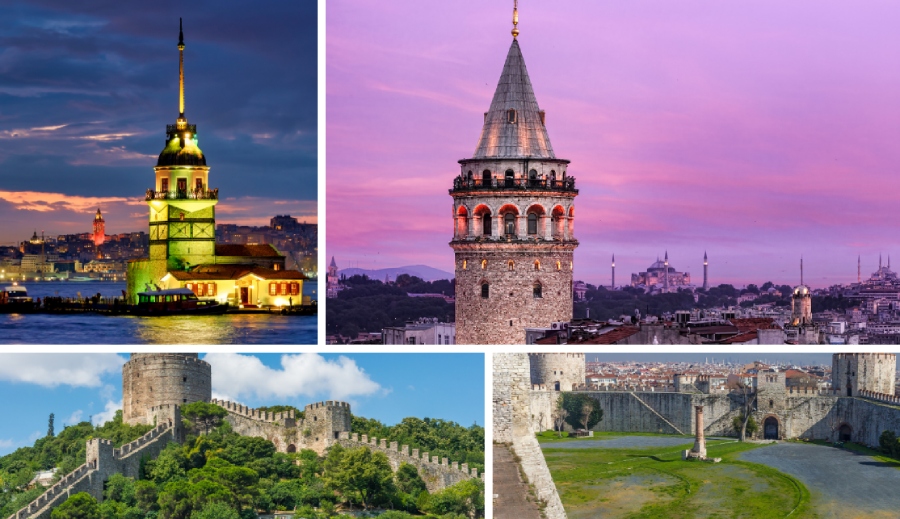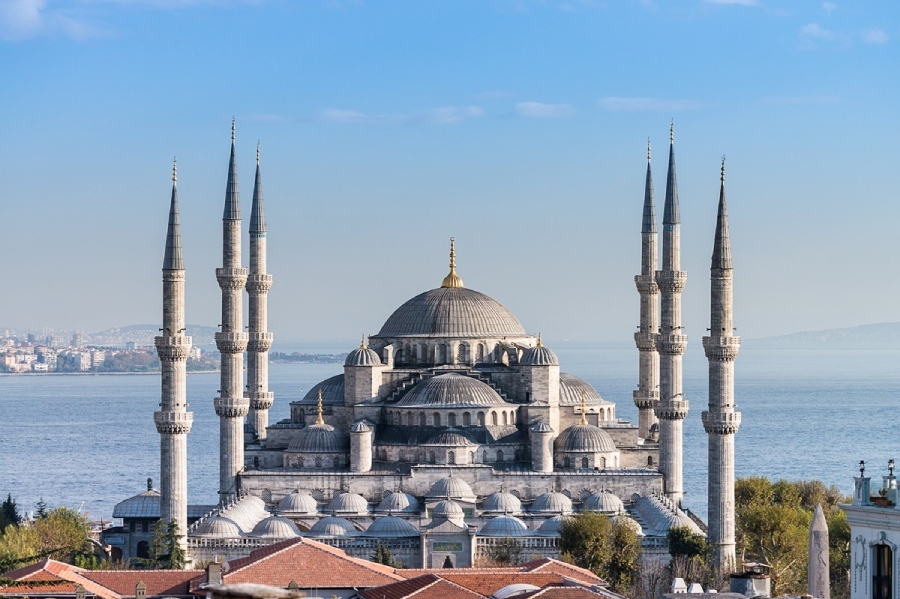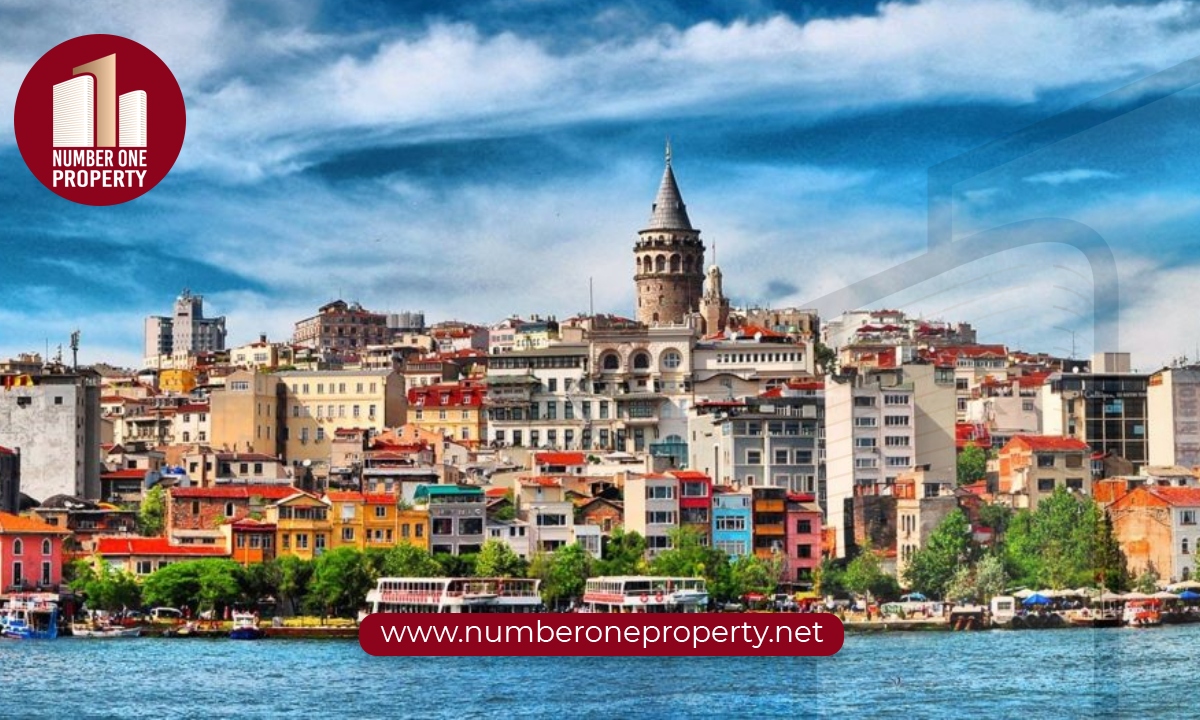Istanbul, where history and modernity intertwine, offers a captivating tapestry of real estate districts, each with unique character and allure.
From the timeworn cobblestone streets of Sultanahmet to the sleek high-rises of Maslak, Istanbul's real estate landscape is a testament to its rich past and dynamic present.
Whether you seek the charm of historic architecture, the convenience of modern amenities, or the vibrancy of a bustling cultural scene, Istanbul's diverse districts cater to a wide range of tastes and preferences.
This exploration will delve into the distinctive features of Istanbul's most sought-after real estate areas, shedding light on their historical significance, architectural styles, local amenities, and investment potential.
Join us as we uncover the hidden gems and timeless treasures that make Istanbul's real estate market one of the most fascinating in the world.
A historical building is one with significant historical or cultural importance. This can be due to its age, architectural style, connections to historical events, or cultural significance to a community or society.
Importance of Historical Buildings:
Historical buildings enhance a city's tourism sector and provide a tangible link to the past, representing architectural styles, technological triumphs, and cultural values.
Designation and Recognition:
Historical buildings can receive official recognition from government authorities or historical preservation associations, which may come with legal protections against changes or demolition.
Recognition can come from being listed on a National Register, designated by a Local Authority, or located in a Historic District.
The Attractiveness of Historic Buildings:

Historic buildings are attractive for several reasons. They draw people in with their beauty, historical importance, and connection to the past. Here's why they are so appealing:
Aesthetic Appeal:
Historic buildings attract people because they link the past and present. They offer a beautiful experience and a sense of belonging.
Architectural Beauty: Historic structures represent the most stylish styles of architecture of their time, showing the creativity and technical ability of the era.
Unique Character: Historic buildings all have a unique story to tell through their architectural details, materials, and weathering. This distinct character adds depth and intrigue that modern buildings often lack.
Sense of Place: Historic buildings are significant because they give a city or town a distinct appearance and feel. They contribute to a unified streetscape and connect us to a particular time and location.
Historical Significance:
Tangible Link to the Past: Exploring old buildings gives us a tangible link to the past. It helps us connect with the experiences of people before us and understand history better.
Storytelling and Inspiration: The history of many old buildings shows the crucial moments that have shaped our world. These buildings remind us of the successes and struggles of past generations.
Cultural Value: Historic buildings can be crucial to a group of people for their cultural significance. They can be sacred sites, traditional homes, or community landmarks. This history adds another reason for people to be interested in the building.
Beyond Aesthetics and History:
Sense of Permanence: Historic buildings show human creativity and endurance. They remind us of the lasting human spirit.
Investment Potential: Well-preserved historic buildings are important because they attract tourists and help the local economy. They have a unique character that makes them different from modern buildings.
Sense of Community: Historic buildings unite people and help communities stay connected to the past. They provide shared spaces for gatherings and contribute to a strong local identity.
Lifestyle Experience:
Living in a historic property allows you to enjoy a unique lifestyle that mixes rich history, elegance, and modern amenities.
Luxury properties, luxury apartments, and shopping centers in historic luxury developments provide a high-quality lifestyle.
Advantages:
Historical charm buildings contain distinct architectural elements, such as high ceilings, elegant moldings, and hardwood flooring, which give them a unique and excellent feel.
Living in a historic building may create a strong sense of community. Residents frequently share an interest in history and a desire to preserve the building's legacy. This promotes a connected community.
Historic buildings are frequently found in prime positions in city centers, near cultural attractions, parks, and bustling neighborhoods.
Potential Drawbacks:
Historic houses may have fewer living areas than modern apartments. The layout may need to be more functional, with irregular room shapes, tiny passageways, and restricted closet space.
Restoring historic buildings to meet current plumbing, electrical, and insulation regulations can take time and effort.
Upkeep on a historic structure can be more demanding than on a modern one. Original elements such as hardwood floors or intricate moldings may necessitate specialist maintenance and potentially more significant repair costs.
Economic Impact of Historic Buildings on the Real Estate Market:
The economic significance of historic buildings on the real estate market goes far beyond simply purchasing and selling them.
Preserved historic structures function as a powerful economic engine, producing revenue and stimulating growth in many critical areas:

Tourism and Hospitality:
Historic buildings, particularly those with cultural and architectural significance, are popular tourist destinations. They attract people from all over the world and generate significant revenue for locals.
Historic districts with well-preserved structures and luxury housing offer travelers a unique and immersive experience. What encourages visitor spending and attracts them to remain longer?
Some historic buildings can be transformed into appealing boutique hotels or bed and breakfasts for visitors seeking a unique and authentic experience.
Property Values and Development:
Residences and companies in historic districts typically have higher property values than those in generic regions. This appreciation benefits the building owners and the local tax base, generating cash for the city.
Preservation activities in historic districts can help to revitalize neglected neighborhoods, bringing new businesses and inhabitants.
This intelligent growth strategy uses existing infrastructure and previously unused areas, resulting in a more lively and economically productive urban landscape.
Real estate investment in general a preferred investment especially for foreign investors,
Job Creation and Investment:
Well-preserved historic districts attract investment from businesses and developers who understand their economic potential. This investment contributes to the local economy by generating new businesses, jobs, and opportunities.
Investment in conserving history boosts the local building industry and related industries.
Historic Building Real Estate Market Dynamics: A Unique Blend of Tradition and Trends
The historic building's real estate market presents a fascinating blend of traditional factors and unique dynamics.
Factors Influencing Traditional Historic Building Markets:
Historic buildings in ideal locations, near cultural hotspots or with breathtaking views, tend to command a premium price.
Well-preserved historic buildings with original characteristics and character tend to earn higher prices than those that require considerable refurbishment.
A limited supply of historic buildings in a specific architectural style or time can cause prices to rise.
Global investors are attracted to luxury amenities in residential areas and business districts, which are diverse in Istanbul's real estate market.
Unique Dynamics of Historic Buildings:
Historic buildings frequently require specialist restoration and maintenance, which can be more costly than preserving modern structures. This can influence affordability, potentially limiting the buyer pool.
Many historic structures have restrictions on changes or restorations to protect their architectural integrity. This can limit prospective usage and may necessitate additional licenses or approvals for alterations.
Emerging Trends:
Renewing historic houses using sustainable methods is gaining popularity.
Combining historic charm buildings with city life can improve comfort and convenience in historic buildings while preserving their historical charm.
Challenges and Opportunities:
A mix of traditional and unique elements influences the real estate market for historic buildings. Understanding these dynamics is critical for anybody navigating this market, whether they are an investor, a possible buyer, or simply someone who values the beauty and significance of ancient buildings.
By adopting responsible preservation, inventive adaptation, and intelligent incorporation of new technology, the historic building real estate market can continue to thrive. It offers a rich history, investment potential, and a connection to the past.
Istanbul's historic districts:
Many iconic landmarks in Istanbul are cultural heritage districts that tell stories about the city's rich history.
Istanbul is a fascinating combination of rich history, whispering ancient charm stories and providing a distinct blend of architectural majesty, historical appeal, and natural beauty. Here are some of Istanbul's historical districts:
Beyoglu: Known for its historical charm and active cultural scene, Beyoglu has a mix of modern and traditional residential homes, making it a popular investment destination.
Sisli: This region is a significant business and shopping district, making it an attractive location for commercial real estate investments.
Besiktas' distinctive identity stems from its posh neighborhoods and vibrant business district.
One of Istanbul's oldest and most historically significant neighborhoods, Fatih occupies a sizable chunk of the Historical District. There are a ton of historical and tourist attractions in Fatih, such as:

Hagia Sophia
Sultan Ahmed Mosque (Blue Mosque)
Topkapi Palace
Spice Bazaar
Grand Bazaar
Suleymaniye Mosque
The oldest and most historic area of Istanbul's Asian side, Uskudar, includes many historic buildings, such as the Maiden's Tower and the Çamlıca Hill.
Advantages of Investing in Historic Buildings in the Istanbul Real Estate Market:
As known in the real estate market, strategic locations for any property investment program can attract domestic and international buyers. A historic location is always a prime location and attracts property investors.
Since the Istanbul real estate market is an attractive destination for global investors and foreign buyers, increasing demand for residential areas will create more investment opportunities.
Istanbul is a global city, and its real estate markets attract foreign investors.
Here's a list of the benefits that make these homes so appealing:
Financial Advantages:
Appreciation Potential: Historic structures, particularly those in favorable settings, tend to increase in value over time. Their scarcity, distinctive character, and historical significance make them an attractive asset class and raise property prices.
Rental revenue: These buildings can provide a consistent source of income by renting them out as residential units, boutique hotels, or business spaces. The tourist business in Istanbul makes such rentals incredibly profitable.
Tax incentives and investment program: The Turkish government provides tax reductions and credits for historic building restoration and preservation. These incentives can significantly reduce the total investment cost.
Beyond Financial Gains:
Owning a historic structure presents a one-of-a-kind and practical investment opportunity. Unlike stocks or bonds, you own a physical item with a history and a tie to the past. It can be a treasured object passed down through the generations.
Historic buildings are frequently located in thriving, culturally significant communities. Owning property in a historic and strategic location can provide you with a strong sense of community and a rich cultural heritage .
The Future of Historic Real Estate Properties:
Historic buildings' real estate market and landmark building investments are promising in major cities like Istanbul.
Istanbul has an intriguing appeal. Modern conveniences and amenities. While conserving its historical riches, Istanbul's real estate market also caters to those seeking modern amenities. Contemporary apartment buildings offer cutting-edge features.
Using smart home technology in old charm buildings in a city's strategic location amazes local and international investors.
Real estate projects in Istanbul's real estate market appeal to global investors.
International investors can obtain Turkish citizenship if they meet the stated conditions: owning a property in Turkey, having a modern living environment, and finding investment opportunities in Istanbul's real estate market.
Conclusion:
Whether you prefer urban districts' fast-paced adrenaline or historic neighborhoods' timeless beauty, Istanbul's real estate market has something for everyone.
As the city continues to evolve and adapt, its real estate market promises to remain a dynamic and exciting space for investors, homeowners, and those captivated by Istanbul's undeniable charm.
As you embark on your real estate journey in this extraordinary city, we invite you to explore the diverse districts we've highlighted and discover the perfect property that resonates with your aspirations and lifestyle. Istanbul awaits, ready to welcome you to a world of endless possibilities.
Read Also:
The Bridges of Istanbul: Spanning Continents and Cultures
How Istanbul's Real Estate Market is Adapting to Global Investors' Needs


